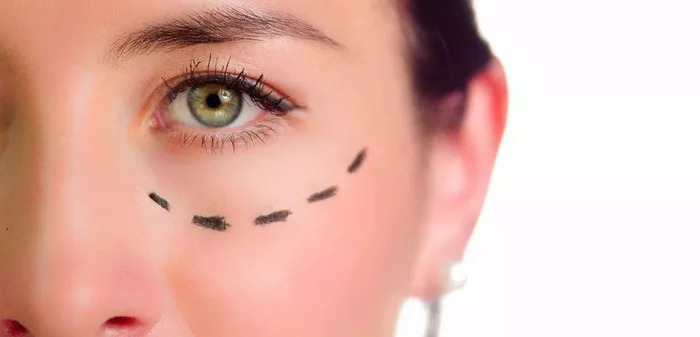Lower blepharoplasty, also known as lower eyelid surgery, is a cosmetic procedure designed to improve the appearance of the lower eyelids by addressing issues such as under-eye bags, puffiness, excess skin, and wrinkles. This surgical intervention can help rejuvenate the eyes, restore a more youthful and refreshed appearance, and boost self-confidence. In this article, we will delve into the details of lower blepharoplasty, including its benefits, techniques, and the recovery process.
Understanding Lower Blepharoplasty
Lower blepharoplasty is a surgical procedure that specifically targets the lower eyelids. It aims to address various cosmetic concerns, including:
- Under-Eye Bags: Lower blepharoplasty can eliminate or reduce the appearance of under-eye bags caused by fat deposits or herniation of orbital fat pads.
- Puffiness: If the lower eyelids appear puffy or swollen due to fluid retention, lower blepharoplasty can help restore a smoother and more rested appearance.
- Excess Skin: Loose or sagging skin in the lower eyelid area can be tightened and removed through lower blepharoplasty, resulting in a firmer and more youthful look.
- Wrinkles and Fine Lines: Lower blepharoplasty can also address wrinkles and fine lines in the lower eyelid region, providing a smoother and rejuvenated appearance.
Techniques Used in Lower Blepharoplasty
Lower blepharoplasty can be performed using various techniques, depending on the patient’s specific needs and the surgeon’s expertise. The two primary techniques used in lower blepharoplasty are:
-
Transconjunctival Approach
This technique involves making an incision on the inner surface of the lower eyelid, called the conjunctiva. This approach is suitable for patients with minimal excess skin and primarily targets under-eye bags or fat protrusion. It leaves no visible external scars and allows for precise fat repositioning or removal.
-
Subciliary Approach
In this technique, an incision is made just below the lower eyelash line, allowing the surgeon to access and address excess skin, fat, and muscle laxity. This approach is ideal for patients with significant excess skin and involves a discreet incision that typically results in a well-hidden scar.
The choice of technique depends on factors such as the patient’s specific concerns, the amount of excess skin or fat, and the surgeon’s recommendation after a thorough evaluation.
Benefits of Lower Blepharoplasty
Lower blepharoplasty offers numerous benefits for individuals seeking to improve the appearance of their lower eyelids. Some of the key advantages include:
- Youthful and Rested Appearance: Lower blepharoplasty can eliminate under-eye bags, puffiness, and excess skin, providing a more rested and youthful appearance to the eyes.
- Improved Self-Confidence: By addressing cosmetic concerns and enhancing the overall appearance of the lower eyelids, lower blepharoplasty can boost self-confidence and self-esteem.
- Long-Lasting Results: The results of lower blepharoplasty are typically long-lasting. While the natural aging process will continue, the improvements achieved through the procedure can be enjoyed for many years.
- Enhanced Facial Harmony: By rejuvenating the lower eyelids, lower blepharoplasty can contribute to overall facial harmony, improving the balance and aesthetics of the entire face.
The Recovery Process
After lower blepharoplasty, it’s important to understand the recovery process and follow your surgeon’s post-operative instructions for optimal healing. Here are some key points to keep in mind:
-
Initial Recovery Period
The first few days after surgery are typically associated with swelling, bruising, and mild discomfort. Applying cold compresses, keeping the head elevated while resting, and taking prescribed pain medication can help manage these symptoms.
-
Stitches Removal
If non-dissolvable stitches are used, they are usually removed within one week of the surgery. This process is quick and relatively painless.
-
Healing and Scar Care
It’s essential to follow your surgeon’s instructions regarding wound care and scar management. This may include gentle cleansing, applying prescribed ointments, and avoiding activities that could strain the surgical area.
-
Resuming Normal Activities
Most patients can return to work and regular daily activities within one to two weeks after surgery, depending on their individual healing progress. Strenuous activities and heavy lifting should be avoided for a few weeks.
-
Long-Term Results
The final results of lower blepharoplasty become more apparent as the swelling subsides and the tissues settle. It’s important to maintain a healthy lifestyle, protect your skin from sun exposure, and follow your surgeon’s advice to preserve the results over the long term.
Conclusion
Lower blepharoplasty is a cosmetic surgical procedure that can address under-eye bags, puffiness, excess skin, and wrinkles in the lower eyelid area, providing a more youthful and refreshed appearance. By understanding the benefits, techniques, and recovery process of lower blepharoplasty, you can make an informed decision about this transformative procedure. Consultation with a skilled and experienced plastic surgeon is crucial to determine your candidacy, discuss your specific concerns and goals, and receive personalized guidance throughout the entire process. With lower blepharoplasty, you can regain confidence in your appearance and enjoy a more vibrant and rejuvenated look.


